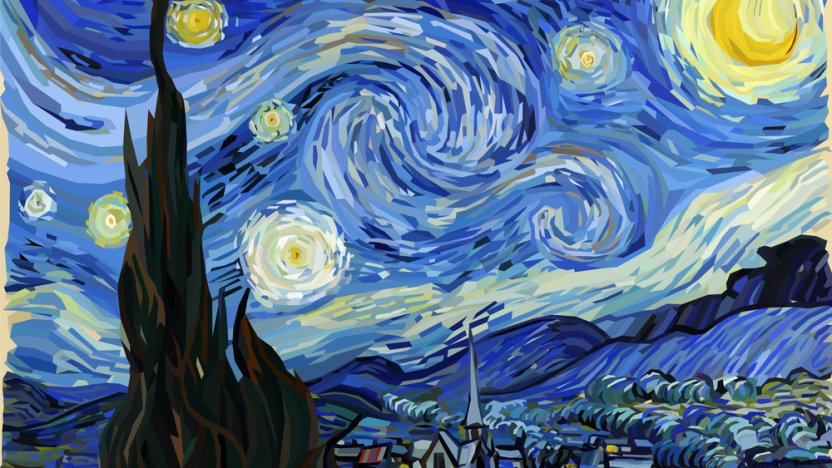A Deep Dive into the Most Iconic Trump Artworks of Recent Years
A Deep Dive into the Most Iconic Trump Artworks of Recent Years
Blog Article
Starting an Aesthetic Trip Through the Lyrical Interpretations of Nature in Impressionist Landscapes
Each brushstroke, each play of light and shadow, and each color selection in their works talks quantities regarding the artists' deep connection to nature and their capacity to equate its charm onto the canvas. As we discover the lyrical analyses of nature in Stylist landscapes, we are welcomed to submerse ourselves in a world where fact and emotion intertwine, supplying a glimpse right into the musicians' profound gratitude for the all-natural world.
The Captivating Brushstrokes of Claude Monet
Claude Monet's proficiency of brushstrokes transcends mere strategy, imbuing his landscapes with an ethereal top quality that mesmerizes and astounds customers - trump art. His innovative use of shade and light, combined with his distinct brushwork, creates a feeling of movement and life within his paints. Monet's renowned collection of jobs portraying water lilies and his legendary haystacks showcase his capacity to capture the fleeting results of light and environment

Enjoying Light and Darkness With Camille Pissarro
Embodying a comparable respect for the interaction of light and shadow, Camille Pissarro's creative vision unfolds as an unified expedition of the natural world's luminescent subtleties. Pissarro, a vital number in the Impressionist movement, masterfully caught the vibrant relationship between light and darkness in his landscapes. His experienced use of color and brushwork permitted him to share the subtle shifts in light that define different times of day and seasons.
Pissarro's paints typically include spotted sunshine filtering through leaves, casting detailed patterns of light and shadow on the earth below. In works such as "Hoar Frost, the Effect of Snow, Pontoise," Pissarro skillfully illustrates the crisp illumination of winter sunlight juxtaposed with the great darkness that specify the snowy landscape. By welcoming both light and darkness in his compositions, Pissarro invites viewers to immerse themselves in the natural charm and transient impacts of light worldwide around them.

Via Pissarro's jobs, we are advised of the transformative power of light and darkness, welcoming us to stop briefly and value the short lived moments of charm present in the daily landscapes that surround us.
A Symphony of Colors by Edgar Degas
Edgar Degas orchestrates a dynamic symphony of shades in his skillful artworks, infusing his compositions with a vibrant interaction of shades that captivate the audience's gaze. Known primarily for his ballet dancers and intimate scenes of Parisian life, Degas skillfully controlled colors to communicate mood and movement in his paintings. trump art. His use of strong, contrasting shades and refined tonal variations developed a feeling of deepness and vibrancy within his works
Degas' color palette frequently included abundant blues, deep greens, and cozy oranges, which he applied with certain brushstrokes to capture the essence of his subjects. Whether representing a ballerina mid-performance or a group of buddies conversing at a cafe, Degas' colors not just showed the scene yet likewise stimulated a sense of emotion and energy.
In Addition, Degas' trial and error with light and shadow added an added my link layer of intricacy to his color make-ups, improving the overall ambience of his paintings (trump art). With his competent adjustment of color, Degas developed a visual harmony that proceeds to reverberate with customers today
Exploring Nature's Tranquility With Berthe Morisot
Berthe Morisot's creative vision offers a tranquil departure from the lively shade symphonies of Edgar Degas, as she captures the harmony of nature in her evocative landscapes. Understood for her delicate brushwork and intimate portrayals of day-to-day life, Morisot's landscapes radiate a feeling of peace and consistency.
Morisot's paints typically include soft, muted tones that share a sense of calmness and tranquility. Her works, such as "The Cradle" and "Summertime's Day," display her ability to catch the refined beauty of nature in a check this method that is both relaxing and reflective to the viewer.
Unlike some of her Stylist equivalents that focused on dynamic structures and vibrant shades, Morisot preferred to create gentle, introspective scenes that invite the customer to reflect and stop. With her masterful use light and darkness, Morisot develops a feeling of tranquility that resonates with the customer on a deep emotional level.
The Emotional Landscapes of Vincent Van Gogh
Vincent Van Gogh's landscapes clearly share a deepness of feeling via their dynamic brushwork and expressive use shade. The Dutch post-impressionist artist is renowned for his ability to capture raw and extreme emotions in his paintings, transcending standard depictions of nature. Van Gogh's turbulent individual life, marked by mental health and wellness struggles, significantly influenced his art, infusing his landscapes with a sense of unease, melancholy, or vitality.
In jobs such as "Starry Night" and "Wheatfield with Crows," Van Gogh's swirling brushstrokes and dynamic color choices evoke an extensive psychological response from viewers. The turbulent skies and perturbed landscapes in his paints show his inner chaos and emotional turbulence, welcoming visitors to look into the complexities of his psyche.
Van Gogh's one-of-a-kind visual language, characterized by overstated viewpoints and strong use shade, develops landscapes that resonate with audiences on a deeply emotional degree. With his art, Van Gogh invites us to see nature not simply as an exterior truth but as a mirror of our innermost sensations and feelings.
Final Thought
To conclude, the impressionist landscapes of musicians such as Claude Monet, Camille Pissarro, Edgar Degas, Berthe Morisot, and Vincent Van Gogh use a exciting and special visual interpretation of nature. With their use brushstrokes, light, feeling, and shade, helpful site these musicians have developed a harmony of images that stimulate a feeling of calmness and appeal in the natural globe. Their works continue to influence and charm viewers with their lyrical interpretations of the landscapes around us.
Each brushstroke, each play of light and shadow, and each shade selection in their jobs speaks quantities about the artists' deep connection to nature and their capacity to translate its elegance onto the canvas. His cutting-edge usage of color and light, integrated with his unique brushwork, creates a feeling of motion and life within his paints. His proficient usage of shade and brushwork allowed him to communicate the refined shifts in light that define different times of day and periods.

Report this page